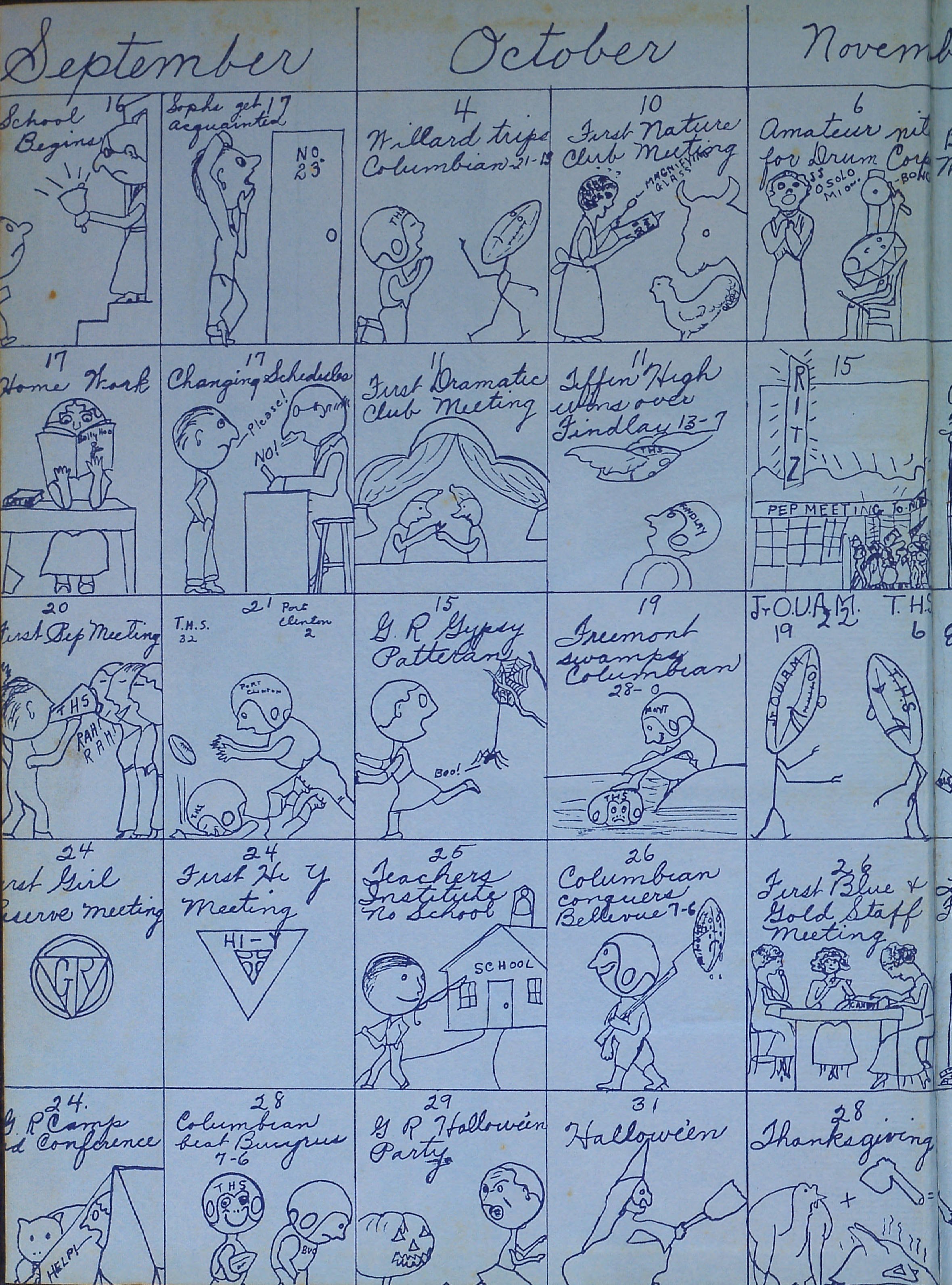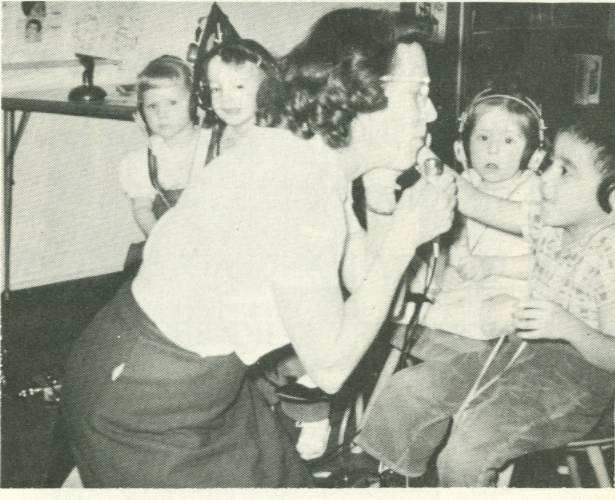by Emily Rinaman, Technical Services Manager
Today Ohio has a plethora of scenic railroad trips one can take or sections of a canal where you can ride, but in the days when these modes of transportation were some of the only ways for people to access Northwest Ohio, they weren’t as sensational of rides as visitors experience today. Before the canals and railways were built, travel in the area we today call home was quite treacherous. The Seneca County Digital Library has multiple accounts of early settlers’ harrowing journeys to reach Seneca County.
Just a few years after Seneca County was established in 1824, the canals opened additional tracts and habitation by immigrants flourished. The plans for a tract that was supposed to run straight through Seneca County (which would have made travel to this location even easier back in those days) fell through after various routes for that track were considered.
A proposed canal (bold line) was scheduled to be built in eastern Seneca County and would have traveled straight through Republic, but it never materialized.
The proposal was serious enough that some of the newly granted land was purchased by the canal companies. The Miami and Dayton Canal, which planned to connect Lake Erie to the Ohio River, had bought land in section 5 of Reed Township in May 1828.
Settlers up to that point had been utilizing the existing Erie Canal, which opened in 1825, and provided access from as far as New York City via the Hudson River. Those coming from the east would be able to reach as far as Buffalo, New York, where they would ride boats on Lake Erie to Sandusky.
One resident recalls the journey, which is recounted in a Stemtown News newsletter:
“We were all children when we came to Ohio. We started the 12th of September, 1831, from our home. Came to Ithaca, took the boat at the inlet … We took the canal to Bufffalo then took the steamboat to Sandusky City. Sent the goods up to Fremont on the boat. Father hired a man to bring the family up to what is now Fort Seneca. We got here the 21st which took us 10 days to go where we can (now) go in 24 hours.”
At this point, “Ohio caught canal fever.” Besides the Miami and Dayton Canal, the Miami-Maumee Canal further west of Seneca County, used the Maumee River to connect to Cincinnati. (This is the canal system in which Grand Rapids, Ohio belongs, a popular tourist site for canal enthusiasts). Likewise, the Wabash and Erie Canal tract was an extension of the Erie Canal which allowed prospective new landowners to reach Indiana.
Seneca County residents were certainly optimistic for the plans of a canal tract running through the county. In January 1832, the Ohio Legislature passed a bill to allow land surveys to be conducted to garner the financial estimates for construction. According to the “The What, How and who of It: An Ohio Community”, a book of a collection of local newspaper articles from the 1800s, the canal cost $7,177 per mile and from 1826-1835 until plans for the local canal fell through, residents paid a canal tax. (Records show that the amount collected reached a peak at $553.64 in 1832 which converts to $20,427 in today’s money).
Besides bringing in settlers, the canals aided business owners and tradesmen to sell their wares and product beyond the local community. Wheat farmers sent their yields through the canal systems to lake steamers at ports along Lake Erie that shipped commodities to other states. Another major commodity produced in Ohio and sent elsewhere via the canals, especially during the years when Seneca County saw major increases in settlers who needed to clear the land to build houses, was excess lumber. In the 1850s, Seneca County resident Henry Zahn sent his black walnut to as far as Germany.
The canals additionally helped transport coal, oats, wool, pork, cheese, and whiskey to eastern markets. On the flip side, major imports, which had seemed like luxuries before, were American-made cotton fabric, coffee, sugar, fine china and baking powder.
The canals also produced jobs. According to ___, over 1,000 miles of canals were built in Ohio between 1825-1847, resulting in 294 new lift locks, 44 new aqueducts, and other required functional components. The man power required to build these systems was crucial so the pay was excellent. Many Irish and German immigrants from the area took the opportunity, despite the hard working conditions. In the “History of Seneca County from the Close of the Revolutionary War,” the author describes,
“it was a sad parting when the father left his little ones in the care and charge of the pioneer mother to go sixty miles or more from home and be gone for months at a time to work on the canal and himself become subject to malarious diseases. They were even more prevalent along the canals than elsewhere because they were constructed through dense forests, along the most sluggish streams and the most level ground.”
Canal fever in Ohio was quickly replaced by railroad construction. For a short time, though, the canals and railroads helped in tandem connect immigrants to their final destinations throughout the state.
Wages for the canal-men who hollowed out the canal trenches, cleared the trees, and performed other strenuous tasks were $5 per month, plus room and board for the duration of work, and daily rations of whiskey.
When plans fell through, however, for a local canal, the attention shifted to the newly developing railroads. As early as 1825 when the Erie Canal opened, so did the building of the Sandusky and Mansfield Railroad commence. By 1832, at the same time that plans for a prospective local canal was still in the works, Seneca County residents were also buying stock in the yet-to-be finished Mad River and Lake Erie Railroad (Later on, the Baltimore and Ohio Railroads would be added to the list).
The booming railroad era even had its beginnings with ties to the canals. The first locomotive used in this area, the “Sandusky,” was constructed in New Jersey and shipped to Sandusky by way of the Erie Canal.
Stay tuned for the April 2026 Seneca Strolls blog article to learn more about the subsequent “railroad fever” that eventually took over “canal fever”.
Works cited:
American Society of Civil Engineers. “The Ohio Canal System.” https://www.asce.org/about-civil-engineering/history-and-heritage/historic-landmarks/ohio-canal-system
Case Western Reserve University. “Ohio and Erie Canal.” https://case.edu/ech/articles/o/ohio-and-erie-canal
Barnes, Myron. Seneca Sentinel Bicentennial Sketches. Seneca County Digital Library. https://ohiomemory.org/digital/collection/p15005coll27/id/33669
Jett, Katherine Griffin. History of West Lodi. 1988. https://ohiomemory.org/digital/collection/p15005coll27/id/30110
Lang, William. History of Seneca County from the Close of the Revolutionary War to July 1880. Seneca County Digital Library. https://ohiomemory.org/digital/collection/p15005coll27/id/17928
Mad River and Lake Erie Railroad: Its history and Significance to the Sandusky Valley. https://www.ohiomemory.org/digital/collection/p15005coll27/id/22213/rec/1
National Park Service, Cuyahoga Valley National Park. “History of the Ohio and Erie Canal.” https://www.nps.gov/articles/000/history-of-the-ohio-erie-canal.htm
Stemtown Historical Society. “Stemtown News.” March 1993. https://ohiomemory.org/digital/collection/p15005coll27/id/33995
Scipio-Republic History Society. History of Republic. 1989. https://ohiomemory.org/digital/collection/p15005coll27/id/33668
Seneca County Digital Library, Ohio Memory Project, https://www.ohiomemory.org/digital/collection/p15005coll27/search
Smith, Howard. The What, How and Who of It: an Ohio Community. 1997. Seneca County Digital Library. https://ohiomemory.org/digital/collection/p15005coll27/id/15879
Third Annual Heritage Festival, 1817-1981. Seneca County Digital Library. https://ohiomemory.org/digital/collection/p15005coll27/id/27465/rec/1
For further information:
Ohio Department of Natural Resources. “Ohio Canal Lands Original Plat Map Drawings, 1890-1915.” https://ohiodnr.gov/discover-and-learn/safety-conservation/about-ODNR/real-estate/ohio-canal-maps
Ohio History Connection. “Ohio Canal Plat Map Collection.” Ohio Memory. https://ohiomemory.org/digital/collection/p16007coll93
Kilbourn, John. “Public documents concerning the Ohio canals which are to connect Lake Erie with the Ohio River.” 1828. University of Pittsburgh Library by way of Internet Archive. https://archive.org/details/publicdocumentsc00kilb/page/n5/mode/2up
Canal Society of Ohio. http://www.canalsocietyohio.org/cso-documents-test.html





















































